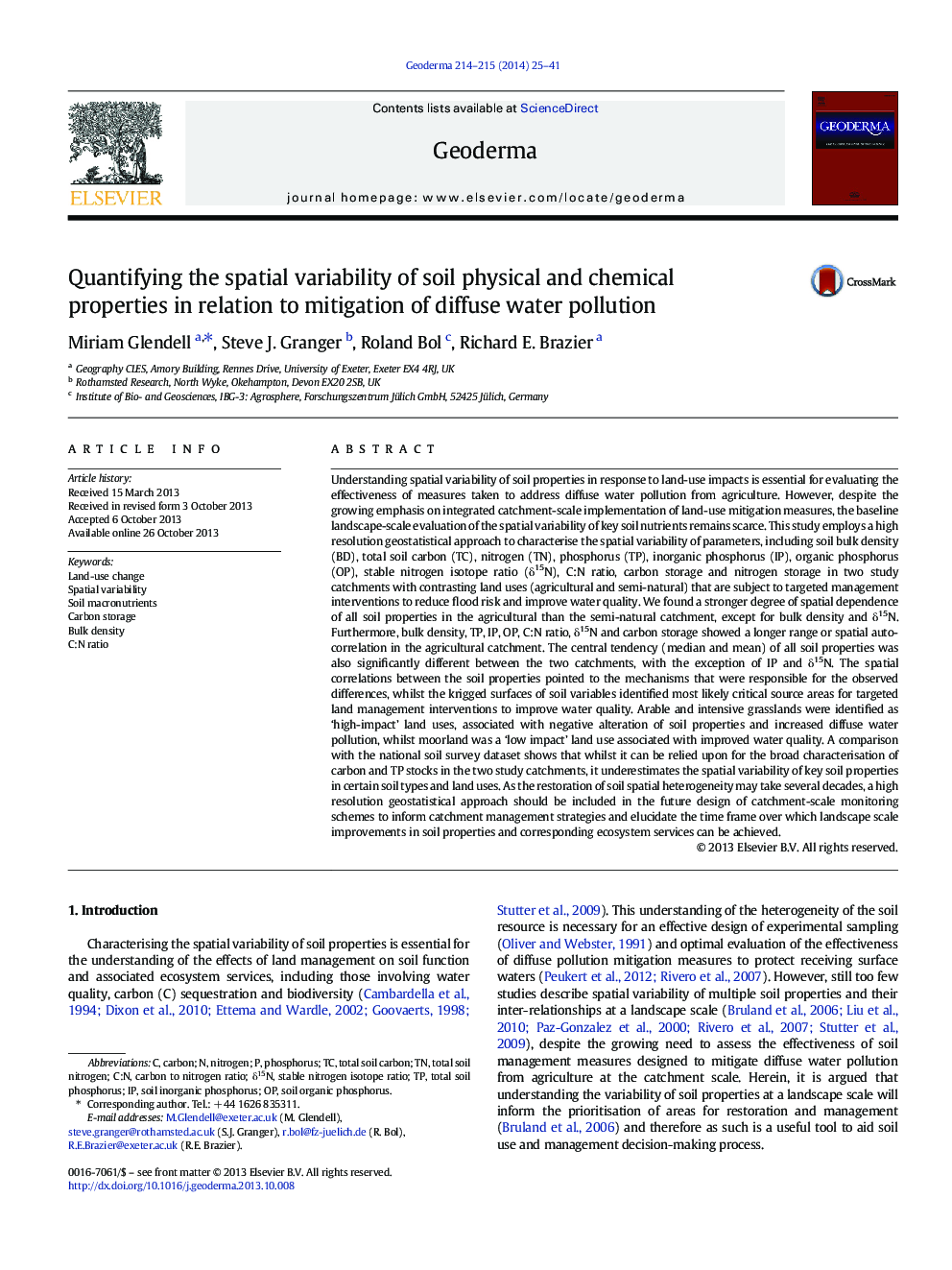| کد مقاله | کد نشریه | سال انتشار | مقاله انگلیسی | نسخه تمام متن |
|---|---|---|---|---|
| 6409052 | 1629478 | 2014 | 17 صفحه PDF | دانلود رایگان |
- Growing emphasis on landscape-scale mitigation of diffuse water pollution
- High resolution geostatistical survey employed in two contrasting study catchments
- Agriculture altered the spatial variability and central tendency of soil properties.
- National soil dataset underestimated the spatial heterogeneity of certain soil properties.
- Design of mitigation schemes should employ high resolution geostatistical survey.
Understanding spatial variability of soil properties in response to land-use impacts is essential for evaluating the effectiveness of measures taken to address diffuse water pollution from agriculture. However, despite the growing emphasis on integrated catchment-scale implementation of land-use mitigation measures, the baseline landscape-scale evaluation of the spatial variability of key soil nutrients remains scarce. This study employs a high resolution geostatistical approach to characterise the spatial variability of parameters, including soil bulk density (BD), total soil carbon (TC), nitrogen (TN), phosphorus (TP), inorganic phosphorus (IP), organic phosphorus (OP), stable nitrogen isotope ratio (δ15N), C:N ratio, carbon storage and nitrogen storage in two study catchments with contrasting land uses (agricultural and semi-natural) that are subject to targeted management interventions to reduce flood risk and improve water quality. We found a stronger degree of spatial dependence of all soil properties in the agricultural than the semi-natural catchment, except for bulk density and δ15N. Furthermore, bulk density, TP, IP, OP, C:N ratio, δ15N and carbon storage showed a longer range or spatial auto-correlation in the agricultural catchment. The central tendency (median and mean) of all soil properties was also significantly different between the two catchments, with the exception of IP and δ15N. The spatial correlations between the soil properties pointed to the mechanisms that were responsible for the observed differences, whilst the krigged surfaces of soil variables identified most likely critical source areas for targeted land management interventions to improve water quality. Arable and intensive grasslands were identified as 'high-impact' land uses, associated with negative alteration of soil properties and increased diffuse water pollution, whilst moorland was a 'low impact' land use associated with improved water quality. A comparison with the national soil survey dataset shows that whilst it can be relied upon for the broad characterisation of carbon and TP stocks in the two study catchments, it underestimates the spatial variability of key soil properties in certain soil types and land uses. As the restoration of soil spatial heterogeneity may take several decades, a high resolution geostatistical approach should be included in the future design of catchment-scale monitoring schemes to inform catchment management strategies and elucidate the time frame over which landscape scale improvements in soil properties and corresponding ecosystem services can be achieved.
Journal: Geoderma - Volumes 214â215, February 2014, Pages 25-41
